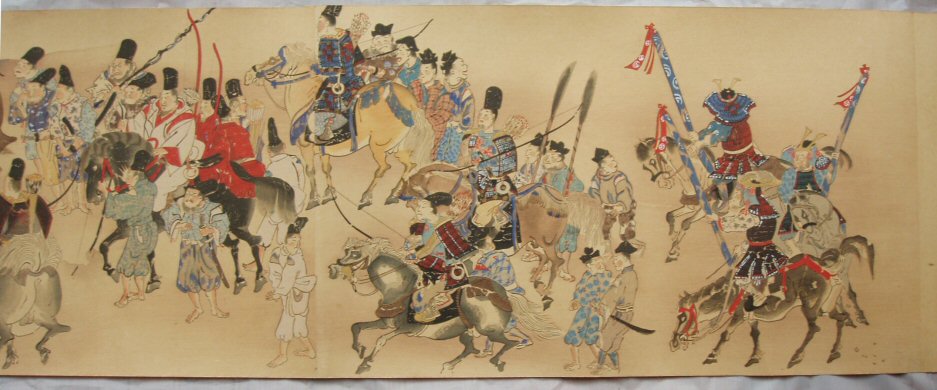

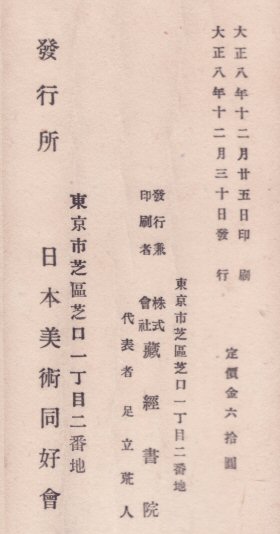
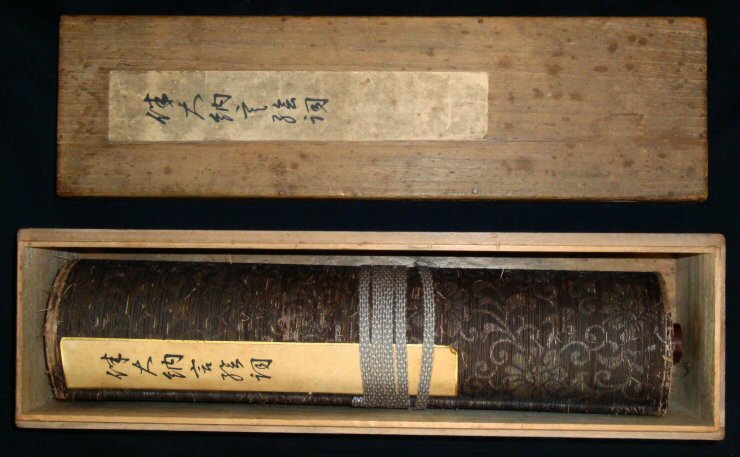
Woodblock Print Copy of the Third Volume of Japanese National Treasure "Ban dainagon ekotoba"
Printed in 1919 and Published by Japan Art Lovers Club (日本美術同好會)
日本國寶《伴大納言繪詞》第三卷之木刻版畫複製本
由《日本美術同好會》於大正八年(1919)十二月三十日發行
Size 12 in. X 379 in. (Painting Portion 362 in.)
Complete Set of Digital Photos of the ekotoba
SOME of the scanned pictures of the handscroll (size reduced)






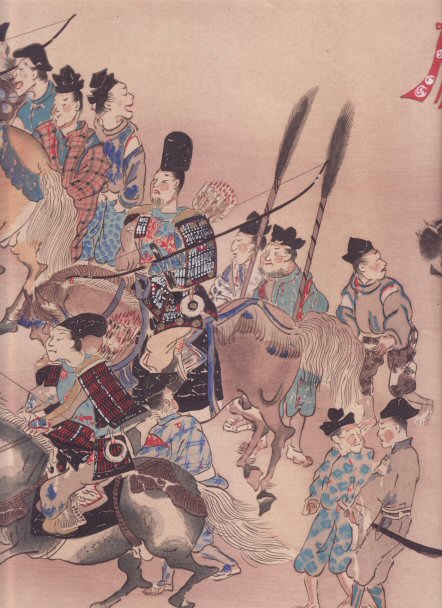
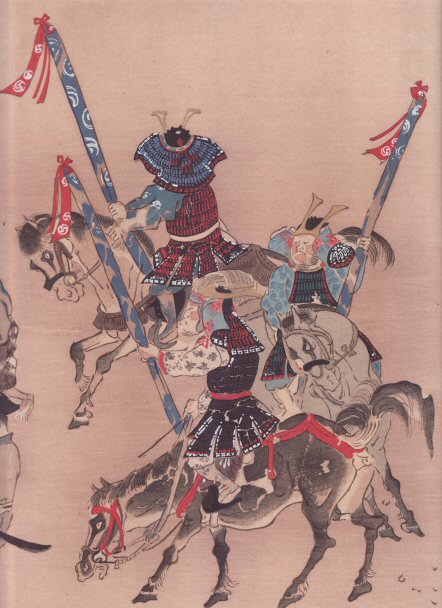
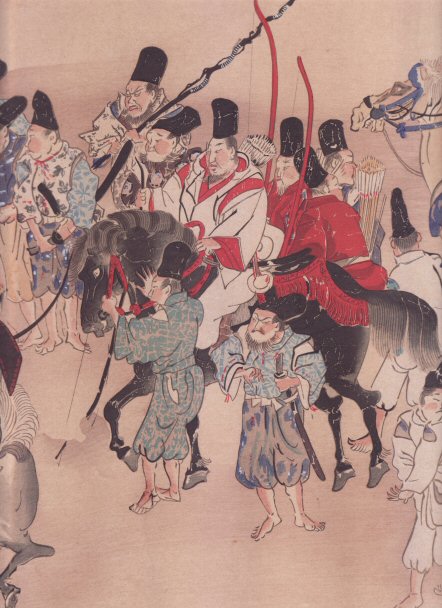
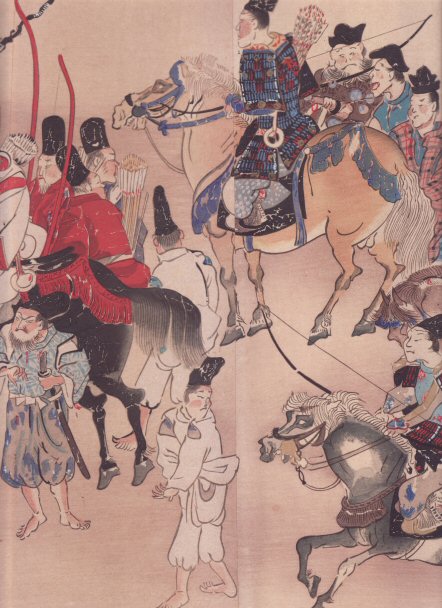
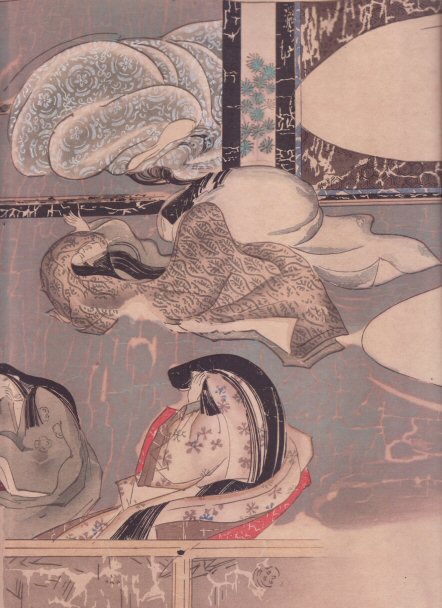
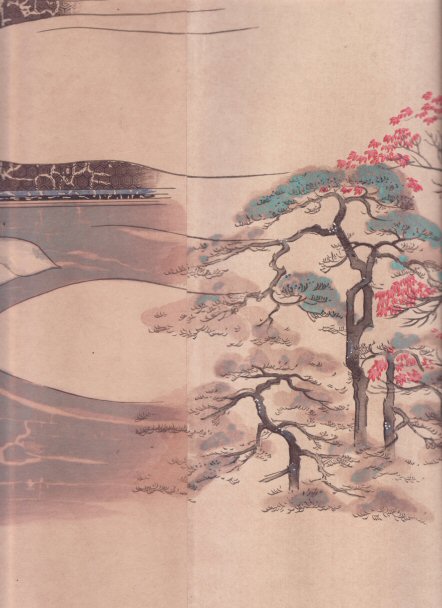
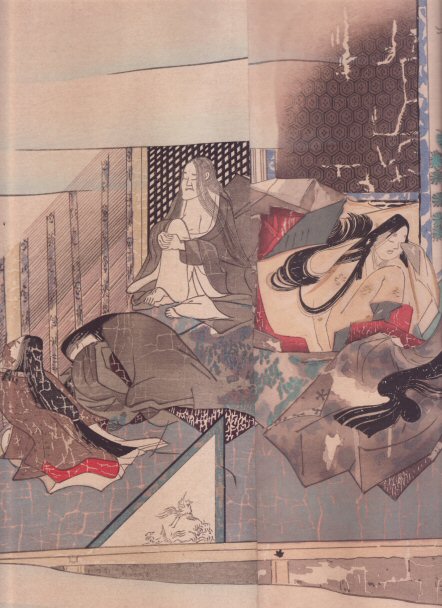
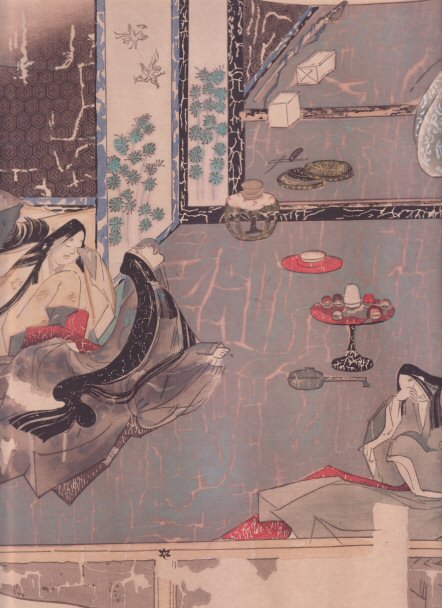
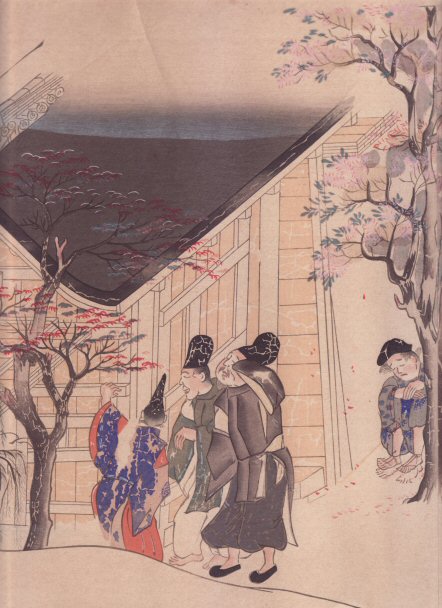
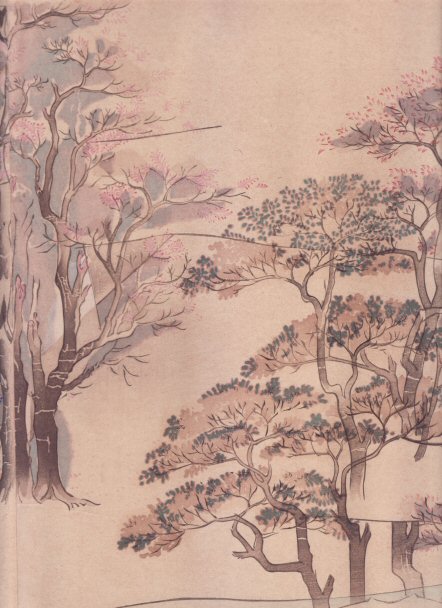
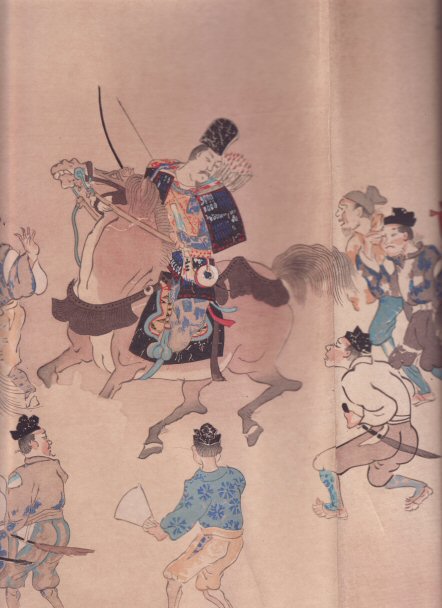
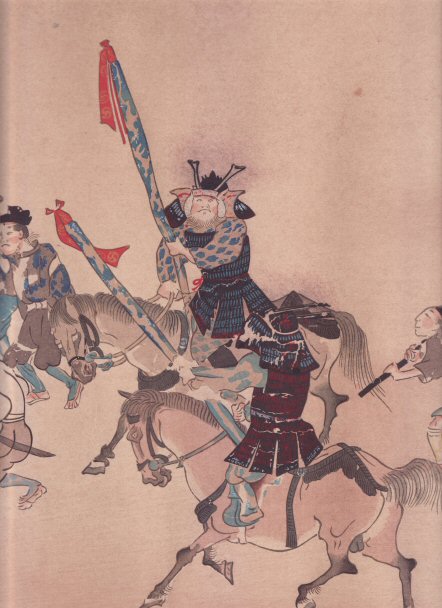
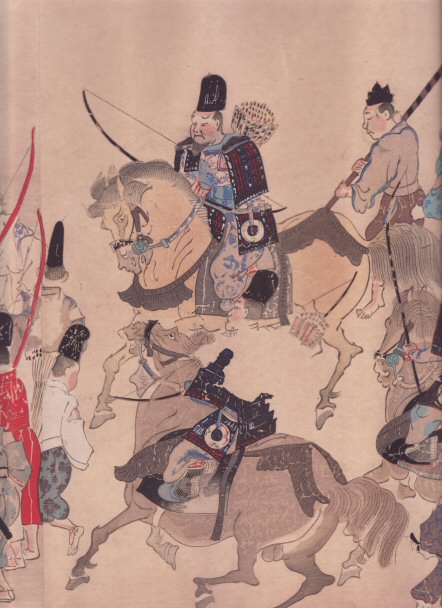
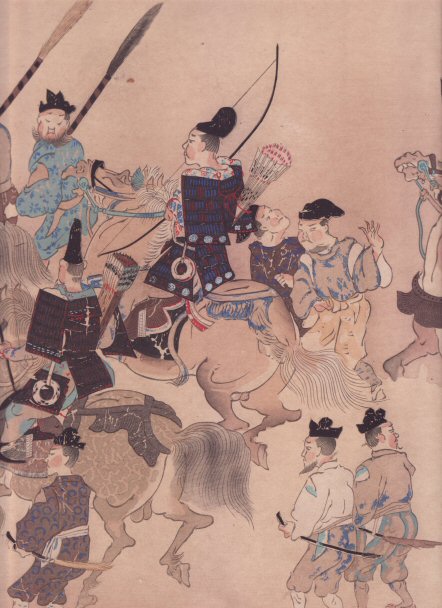
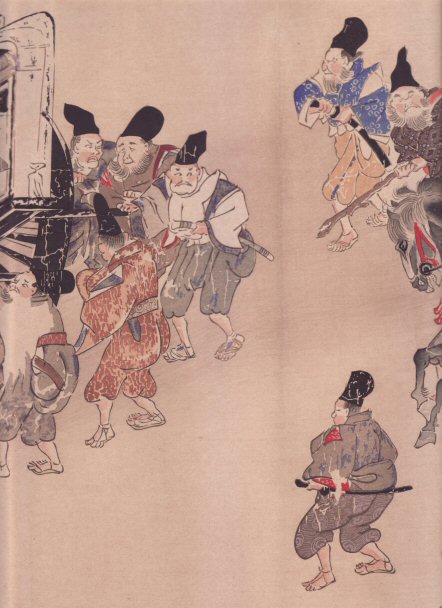
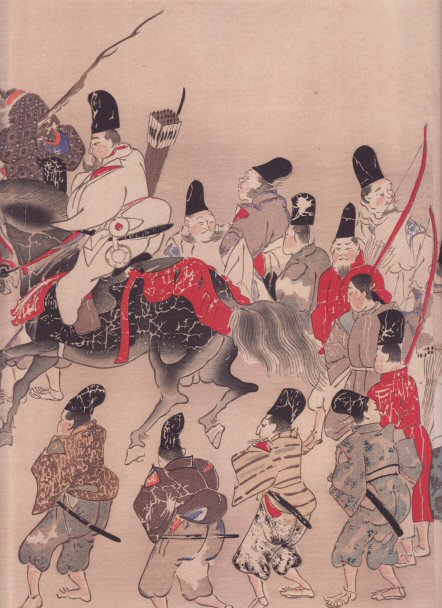
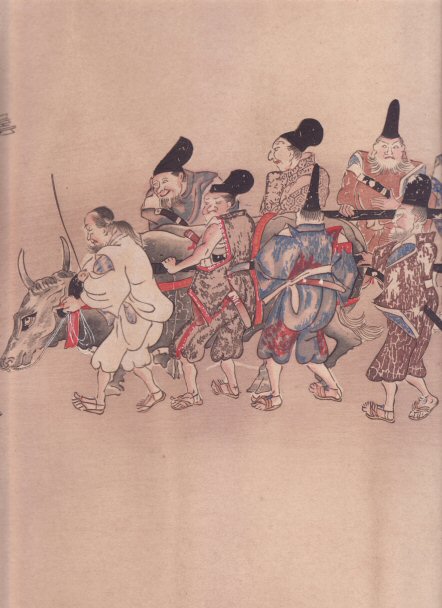
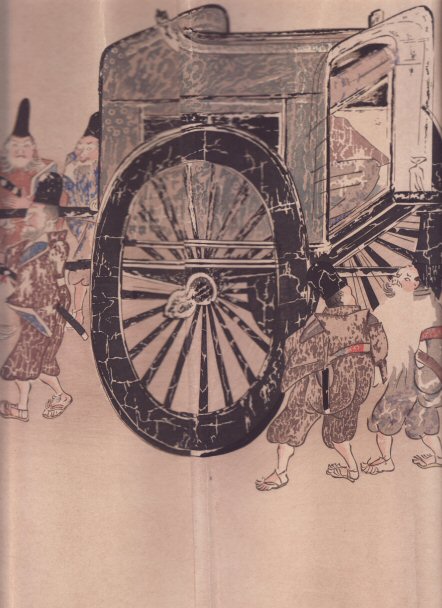

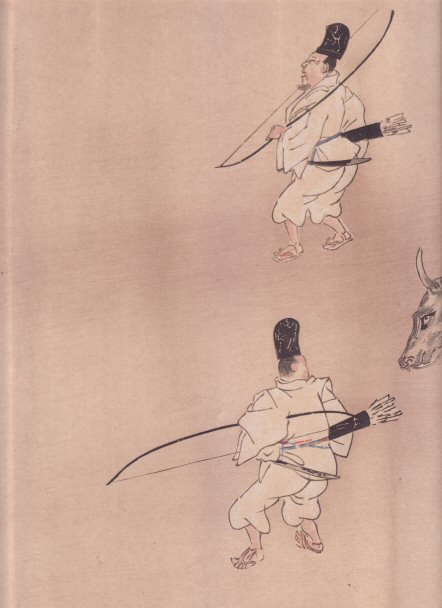
Ban dainagon ekotoba
ekotoba is the name for Japanese narrative painting scroll which started flowering in the Heian Period(794 to 1185), especially after 894 when Japan stopped sending envoys to China in order to reduce the influence of China on Japanese culture. In the Heian Period, reading emaki was a popular activity among the court nobles. The picture scrolls had developed a Japanese style, or a yamato style, which was rich in feminine and decorative essence and with the themes developed around romantic love stories and the courtly lives. During the Kamakura Period, the development of narrative picture scrolls reached its zenith. With the rise of bakufu military force and the decline of the power of the aristocracy, emaki no longer served only the nobles, but became an art for all walks of life. The narrative picture scrolls became more masculine and realistic in style, and were more diversified in terms of artistic styles, narrative methods and subject matter to suit the change of taste of the Kamakura audiences. “In one sense, this diversity is a reflection of the cultural and social complexity of the Kamakura period as a whole". Examining the Japanese narrative picture scrolls in the Kamakura period gives us a way to construct a picture of the “cultural and social complexity” at that time.
It is widely believed that these ekotobas were ordered by the retired emperor Go-Shirakawa (1127-1192, r. 1155-1158) in order to pacify the angry spirit of Tomo no Yoshio after the imperial Ōtenmon burnt down during the large Kyoto fire in 1177. Regardless of whether or not the scroll was made as a result of the fire in 1177, it appears that the intention of the scroll is to mollify Tomo no Yoshio’s angry spirit. The scroll itself depicts the events of the Ōtenmon conspiracy involving Tomo no Yoshio, which occurred on the tenth day of the third month of 866. Tomo no Yoshio’s regret was emphasized in the scrolls through the written text in an attempt to protect against the vengeful will of Tomo no Yoshio’s spirit.
Ban Dainagon Ekotoba (伴大納言繪詞) is a painting handscroll which depicts the Tale of Ban dainagon, i.e. Chief councillor of state Ban). It is a late 12th century emakimono (handscroll painting) depicting the events of the Ōtemmon Conspiracy, an event of Japan's early Heian period. The painting, attributed to Tokiwa Mitsunaga of the Tosa school, is over 20m long and about 31.5cm tall.
The full-color painting depicts the events of March 866, in which Ban Dainagon, also known as Tomo no Yoshio, set fire to the Ōtemmon gate of Kyoto. He then blamed one of his political rivals, Minister of the left Minamoto no Makoto for the fire. However, the true culprit was soon discovered, and Tomo no Yoshio was banished to Izu province.
Stylistically, the scroll is interesting because it is done using a combination of the otoko-e and tsukuri-e styles. Calligraphic lines are used to define figures, which characterizes the otoko-e style used in the shigisan-engi scroll. However, thick coats of bright colors are used in some scenes, typical of the tsukuri-e style used in the Genji Monogatari Emaki.
The Ban Dainagon Ekotoba is consisted of three volumes
Vol. 1 -- The first scroll illustrates the burning of the Otemmon gate while people tried to put off the flames, followed by the proof that Makoto was unjustly accused of his actions during the misunderstandings.
Vol. 2 -- The Second scroll showcased the consolation to Makoto while he is praying to the gods and Buddha despite the fact that he did not do the actions which he was accused of. After that, they showed the suspicions about Tomo no Yoshio burning the gates. This imagery is rather indirect. It illustrates children arguing in the streets, later joined by their parents to abuse them and then gossiping amongst themselves about Tomo no Yoshio burning the gates.
Vol. 3 -- The Third Scroll displays the arrest of Tomo no Yoshio as he is sent to exile. The picture indicates that Tomo no Yoshio had a servant who accidentally revealed the true culprit to the burning of the gate and after being arrested, he confessed to the police about what happened. The women in his mansion seemed morally weakened as they weep while Tomo no Yoshio is being taken to Exile by the pocile in an ox kart.
日本國寶《伴大納言繪詞》繪卷是根據《伴大納言》的故事繪製而成。這個故事以平安時代初期大納言伴善男與左大臣源信的政治紛爭,大納言伴善男等放火燒應天門這兩大事件而展開的,客觀地表現了大納言的命運。雖然它是以歷史事件為主軸展開平安時代的歷史畫面,但它不是正史的記錄,而是一種 "說話物語"的形式,其描寫又帶上一定程度的逼真性。
日本平安時代始於遷都平安京(今京都)的794年,止於平安家滅亡的1185年,延續將近四個世紀,是日本歷史上時間最長的時代。其間於894年廢止了遣唐使,中斷絕中日間官方往來,一度脫離中國文化影響,出現日本本土民族化風潮,整個美術領域都在尋求與以平安京為中心的風土人情相適應的和風表現形式,這時期發展開來的主要繪圖形式稱“ 大和繪 ”。大和繪主要種類是《繪卷物》以及《繪草紙》。
所謂繪卷物是用畫卷表現日本文學作品,是平安時代中內容最豐富、技巧最高、最富民族特色的畫種。
大和繪另外一種重要體裁是《繪草紙》。所謂“ 草紙”是當時流行的筆記小說,以“ 假名”寫成。《繪草紙》則是“ 草紙”的圖解,相當於連環圖。
Other Japanese ekotobas (narrative painting handscrolls) in the collection
Click Here to See Other Woodblock Prints
Click Here to See Other Japanese Paintings
Click Here to Go Back to Homepage